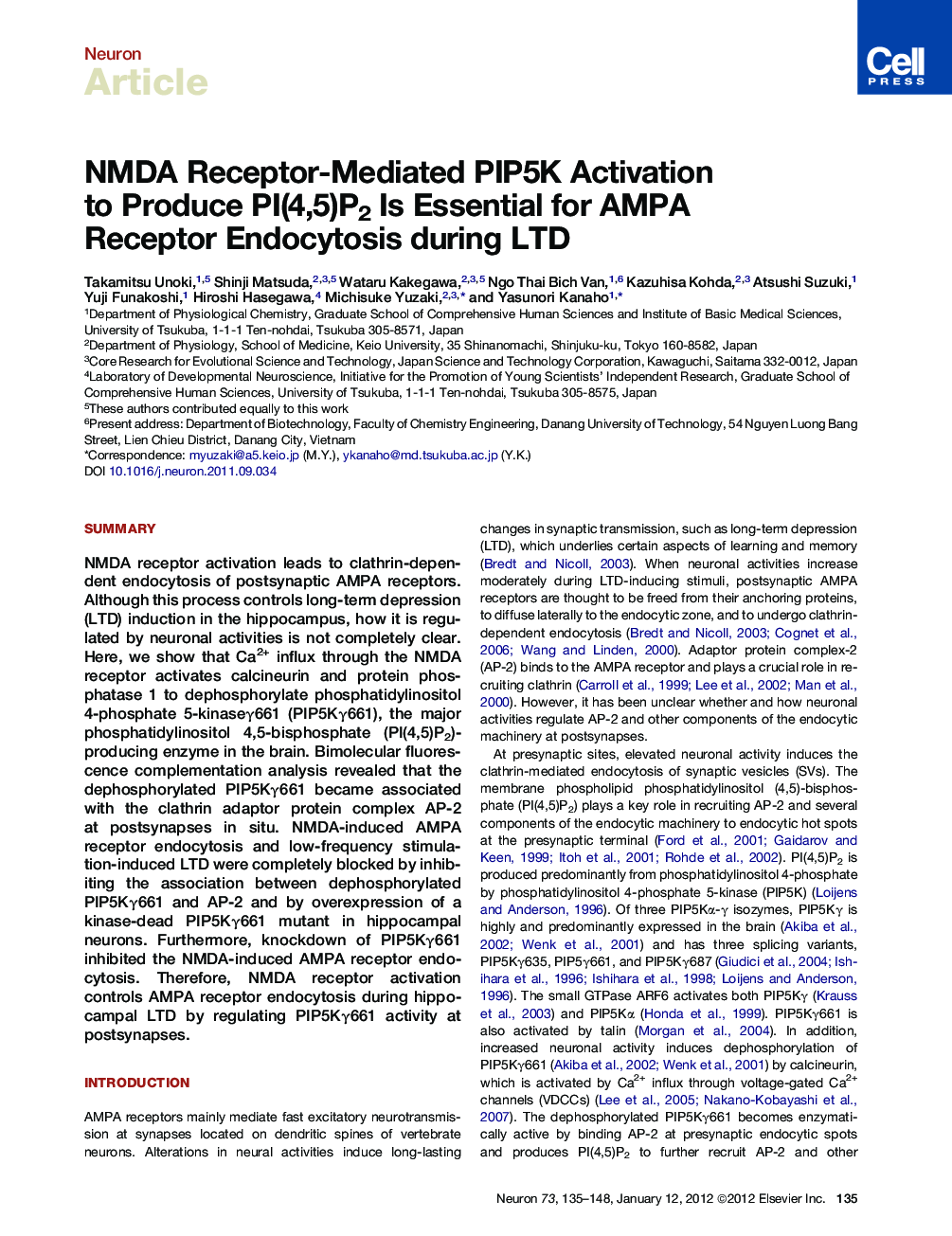| Article ID | Journal | Published Year | Pages | File Type |
|---|---|---|---|---|
| 4321517 | Neuron | 2012 | 14 Pages |
SummaryNMDA receptor activation leads to clathrin-dependent endocytosis of postsynaptic AMPA receptors. Although this process controls long-term depression (LTD) induction in the hippocampus, how it is regulated by neuronal activities is not completely clear. Here, we show that Ca2+ influx through the NMDA receptor activates calcineurin and protein phosphatase 1 to dephosphorylate phosphatidylinositol 4-phosphate 5-kinaseγ661 (PIP5Kγ661), the major phosphatidylinositol 4,5-bisphosphate (PI(4,5)P2)-producing enzyme in the brain. Bimolecular fluorescence complementation analysis revealed that the dephosphorylated PIP5Kγ661 became associated with the clathrin adaptor protein complex AP-2 at postsynapses in situ. NMDA-induced AMPA receptor endocytosis and low-frequency stimulation-induced LTD were completely blocked by inhibiting the association between dephosphorylated PIP5Kγ661 and AP-2 and by overexpression of a kinase-dead PIP5Kγ661 mutant in hippocampal neurons. Furthermore, knockdown of PIP5Kγ661 inhibited the NMDA-induced AMPA receptor endocytosis. Therefore, NMDA receptor activation controls AMPA receptor endocytosis during hippocampal LTD by regulating PIP5Kγ661 activity at postsynapses.
► NMDA-evoked Ca2+ influx induces dephosphorylation of PIP5Kγ661 at postsynapses ► Dephosphorylated PIP5Kγ661 associates with AP-2 at postsynapses ► NMDA-induced AMPA receptor endocytosis requires the PIP5Kγ661/AP-2 interaction ► NMDA-dependent LTD requires the PIP5Kγ661/AP-2 interaction in hippocampal slices
